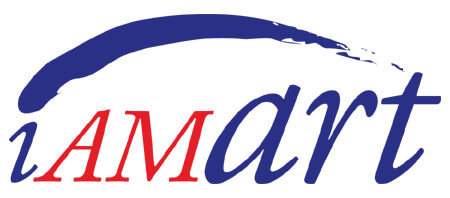paints: pigment codes
how to know what your colors are made from

The names that paint makers give to paints are not always straightforward and obvious. Different brands may use similar names to refer to different qualities and combinations of pigments. While the color on the tube may seem the same, the way the paint will look on the canvas and the way it behaves when mixed with other colors will differ based on what pigments are in the tube.
Learning about Pigment Codes on paint tubes can help you to find the exact color you need, save you from buying colors you don’t need, and assist you in predicting more reliably how colors will interact when mixed together.
The best indicator of what’s in a tube of paint is its Color Index Name. Almost all paints made for artists will include a small code somewhere on the label to tell you the specific pigment(s) that the colors are made from. Some paints consist of just one pigment and, therefore, have just one Color Index Name. Other paints contain mixtures of pigments in which case they’ll bear a list of Color Index Names. In the United States the Association of Textile Chemists and Colorists (AATCC) standardizes these codes.
Color Index Names consist of two parts: the pigment code and a number. There are ten pigment codes that refer to the ten basic categories of pigments:
- PY = Pigment Yellow
- PO = Pigment Orange
- PR = Pigment Red
- PV = Pigment Violet
- PB = Pigment Blue
- PG = Pigment Green
- PBr = Pigment Brown
- PBk = Pigment Black
- PW = Pigment White
- PM = Pigment Metal
Following this code comes a number that specifies the exact chemical compound present in that paint. These numbers are too numerous to list here, but there are a number of useful pigment databases around the web.
For example: Cadmium Red is PR108, but you may encounter a paint labeled Cadmium Red Hue marked PR9. These two paints are made from completely different pigments and though they may look similar, Cadmium Red Hue (sometimes called Naphthol Red Deep) is less opaque and loses some intensity when mixed with white. It is also less expensive. When “Hue” is used with the name of a color, it generally indicates that less expensive substitute pigments have been used that have a similar color and mixing properties to the named color.
Keep in mind that colors of paint made from multiple pigments are already a blend of colors. There is nothing wrong with this, but when you mix these paints with other colors, it may be hard to predict the results, if you don’t know which of the multiple pigments has the strongest tinting strength and covering power.
If you just need a small amount of a specific color, sometimes the pigment codes on the tube can give you the “recipe” to mix the color yourself from paints you already have. For example, the popular color Payne’s Gray is usually just a mix of PB29 (Ultramarine Blue) and PBk 7 (Carbon Black). If you use the color a lot, buy a full tube to save the trouble of always having to mix it, but if you just need a bit, there’s a good chance you already have the colors it’s made from on your palette!
Also note that the same pigment codes will show up on the label for different but related colors of paint. For example, Burnt Sienna and Raw Sienna are both made from PBr7, but the pigment is prepared differently to create the two different colors of paint.
Ultimately, understanding a paint’s Color Index Name is the best way to make an informed decision about the what is actually inside the tube. Getting to know what pigments are in the paints you use and becoming familiar with the properties of those pigments (opaque vs. transparent, strong vs. weak tinting strength, brilliance of color, etc.) will help you choose paints that will work best for you, no matter what brands are available or what name is on the tube.
